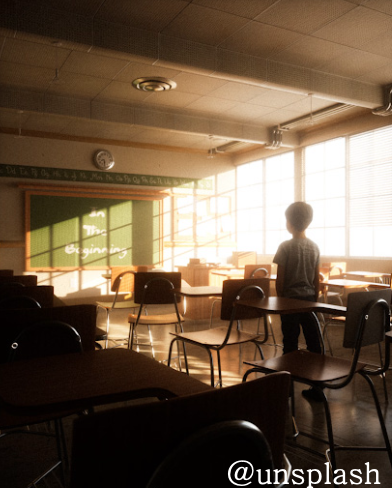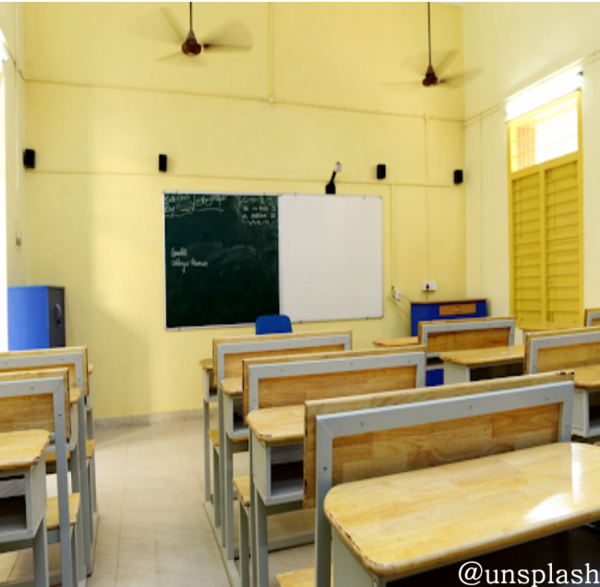How Many Classmates Did You Have Growing Up?
Reflect on your school days. How many classmates did you have? For many, large class sizes provided more opportunities to build friendships and share experiences. In South Korea, class sizes have typically ranged from just over 20 to well above 30 students per classroom. However, compared to previous decades, today’s classrooms are shrinking — and the trend continues. This decline is closely tied to a broader demographic shift in what is often referred to as a VUCA era. VUCA, an acronym for Volatility, Uncertainty, Complexity, and Ambiguity, captures the unpredictable changes that societies face today, including dramatic population shifts. A sharp decrease in the school-age population has become evident since the early 2000s. Compared to the baby boomer generation — a time of abundant human resources — with today’s student population, the drop is striking. The graph below, sourced from South Korea’s Educational Statistics Service, illustrates this decline, highlighting how today’s student numbers have significantly decreased since the year 2000.
According to data from Statistics Korea and the Educational Statistics Service, the average number of students per high school class in the early 2000s was approximately 40. By 2023, this figure had dropped significantly, with the average falling to just 22.9 students per class.
Causes of Declining School-Age Population
One of the primary drivers behind the decline in South Korea’s school-age population is the persistently low birth rate. According to a research by Willem Adema and others, the falling birth rate stems from a complex mix of social and economic factors. A culture of long working hours leaves both men and women with little time to dedicate to child-rearing. For many women, the fear of career setbacks due to childbirth and parenting responsibilities has become a major deterrent to having children. While parental leave policies do exist, utilizing them in practice remains difficult . In fact, South Korea’s parental leave usage rate stands at just around 30%. Rising private education costs have also played a significant role in discouraging childbirth. South Korea ranks fourth among OECD countries in terms of private education spending as a percentage of GDP. In addition to education costs, the growing burden of housing expenses has made it even harder for families to consider having children. Studies have shown that for every 1% increase in housing costs, the fertility rate among women falls by approximately 0.014.

Challenges Arising from the Decline in School-Age Population
As South Korea’s school-age population continues to shrink, schools across the country are facing a wide array of challenges, both complex and urgent. One of the most immediate effects has been the growing difficulty of running schools efficiently. With fewer students enrolled, many schools are struggling to sustain operations, leading to the consolidation or even closure of institutions. In higher education, several universities are now adopting "glocal (global and local)" strategies in an attempt to remain financially afloat, while others have already shut down due to financial strain. A notable example is Jangyeon Elementary School in North Chungcheong Province, which was on the verge of closure until a local school revitalization initiative helped increase its student population and saved the school. In addition to management issues, the decline in student numbers has intensified job instability among teachers. Despite passing the national teacher certification exam, many newly qualified educators remain in limbo, unable to secure a placement. According to the Korea Economic Daily, the average waiting time for appointed elementary school teachers is 15.6 months in Seoul, 13.4 months in Daejeon, and 13.2 months in North Jeolla Province — highlighting serious imbalances in the supply and demand for teachers. Moreover, while approximately 4,793 teaching positions will be cut in 2024, a temporary increase of 1,807 positions has been approved until 2027 to address overcrowded classrooms and ensure basic academic support. This still results in a net decrease of around 2,986 teaching positions. As full-time positions decline, schools are increasingly turning to temporary hires. The proportion of temporary teachers jumped from 3.5% in 2005 to 9.8% in 2015, and is projected to reach 15.4% in 2024. Alarmingly, in middle and high schools, this number rises to 22% and 23%, respectively—meaning roughly one in five teachers is now employed on a temporary basis. These staffing issues are contributing to the rising educational inequalities. Disparities in educational funding, the closure of schools in remote or rural areas, and regional differences in the quality of education are all becoming more pronounced, deepening the existing educational gap.
Addressing the Decline in School-Age Population
To effectively address the decline in the school-age population, it is crucial to tackle its root cause: the persistently low birth rate. While measures such as the creation of a new Population Strategy Planning Office reflect some progress, experts continue to stress the need for long-term, comprehensive support for childbirth and parenting — particularly for working women. Without sustainable policies that ease the burden of childrearing, meaningful change will remain out of reach. From an educational standpoint, several innovative solutions are being explored. For instance, South Jeolla Province has begun implementing AI-driven personalized learning platforms that monitor and adapt to individual student progress in real time. The province is also working to reduce the urban-rural education gap by utilizing metaverse technology, making it possible for students in remote farming and fishing villages to access an education comparable to that of their urban peers. Another promising approach involves repurposing closed schools into lifelong learning centers. This not only revitalizes unused educational infrastructure but also expands access to continuing education for people of all ages — particularly in underserved regions.

Smaller Class Sizes May Lead to Higher-Quality Education
The ongoing decline in class sizes has sparked a growing consensus among educators and policymakers: fewer students per classroom could pave the way for more personalized, higher-quality education. With fewer students, teachers can more effectively tailor instruction to individual needs, provide targeted support, and foster deeper student-teacher engagement. The 2022 Revised National Curriculum of South Korea reflects this vision. It emphasizes "building a learner-centered curriculum system that empowers students to independently plan their learning and future careers, and to learn at a pace and time suited to their individual needs. " This emphasis on customized learning aligns with the belief that smaller class sizes are not merely a byproduct of demographic decline, but also an opportunity to fundamentally alter how education is delivered.
The ongoing debate over reducing class sizes continues to generate differing opinions, but many advocates argue that smaller class sizes can significantly enhance the quality of education. Internationally, some countries have already taken steps to reduce the number of students per class. In 2021, Germany announced plans to halve class sizes, while France revealed intentions to limit class sizes to just 10 students in kindergarten and 15 students in elementary schools. These moves reflect a growing belief that fewer students per class can foster personalized learning experiences and better educational outcomes.
Small Classes, Big Implications
The decline in the school-age population has led to various challenges, and one of the key issues currently faced by schools is the reduction in the number of students per class. To effectively tackle future challenges, it is crucial to fully understand both the benefits and drawbacks of smaller class sizes. Only by accurately assessing the impacts and potential challenges of this trend can we develop effective solutions for the challenges that lie ahead.

